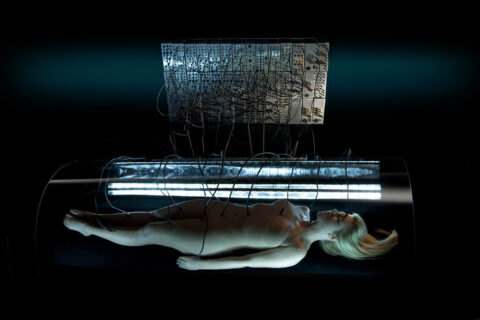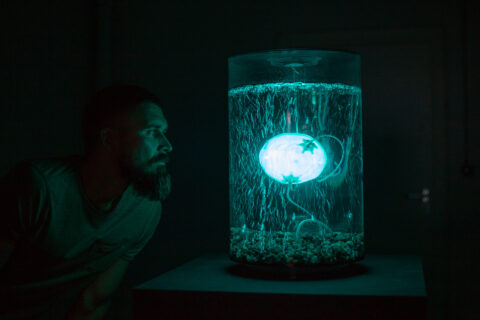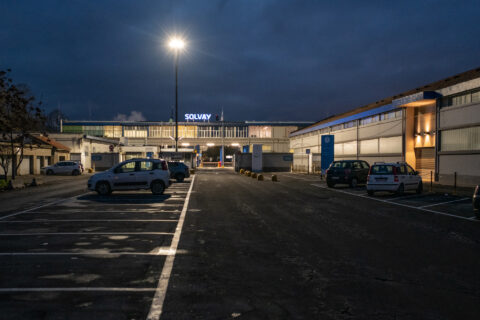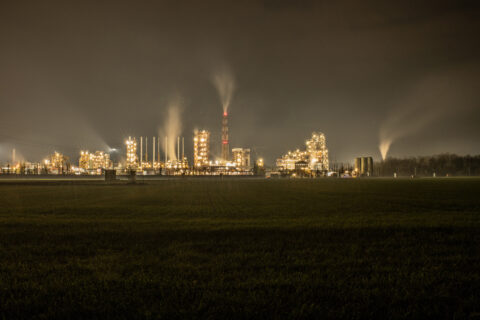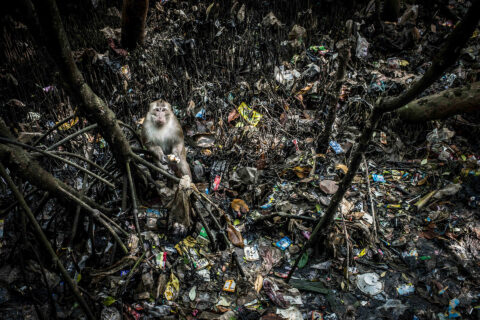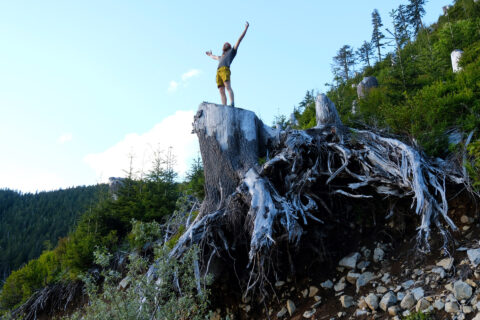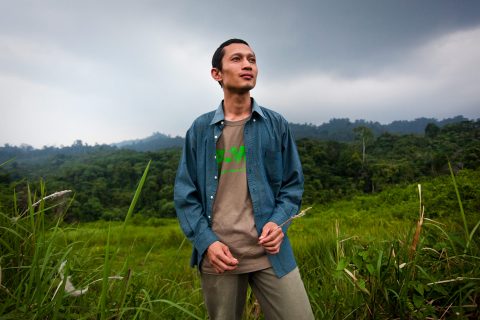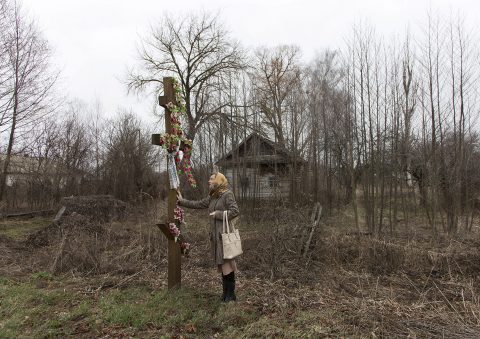PFAS, THE EUROPEAN MAP OF ETERNAL POLLUTANTS
Read our series on the case of Spinetta Marengo chemical center, one of the hot spots of contamination of PFAS in Italy.
Per- and polyfluoroalkyl substances (PFAS) are a family of numerous compounds used to make a plethora of materials and products. Knowledge about the profound characteristics of this class of substances is constantly evolving. The fact that the collection and sharing of information on PFAS is still ongoing, creates very real problems. One of these is the ability of institutions to respond and intervene when faced with pollution cases. Resources are few, doubts are many, and they cause insecurity. The Spinetta Marengo chemical plant, part of the Solvay Group, emits PFAS into the environment. Part of the population, particularly those living near the plant, is concerned about their health. The concern is not the result of irrational, chemophobic behavior, but is based on the results of public health surveys that have been conducted recently.
To this day, there is still no harmonized national legislation establishing legal limits for the presence of PFAS in environmental matrices. In Alessandria, public authorities are trying with great difficulty to address the problem. At the same time, the authorities themselves seem to be victims – more or less aware – of an overwhelming complexity.
Without limits, in search of PFAS
The Alessandria Department of ARPA Piedmont works on both monitoring and control levels. The agency became interested in the presence of PFAS in surface and groundwater between 2007 and 2008. The laboratory that has the specific instrumentation to make PFAS determinations is the one in Grugliasco, near Turin. Over the years, ARPA’s analytical capabilities have improved and investigations have included other matrices, such as water from company discharges and water from sewage treatment plants. At the same time, ARPA also began to detect the new generation PFAS considered “Site-specific”: ADV 7800 (no longer in production) And cC6O4, which is produced exclusively in Spinetta Marengo.
The technologies available to ARPA Piedmont allow a quantification limit of 0.01μg/l (micrograms per liter) For PFAS such as PFOA and PFOS, while for new generations PFAS such as cC6O4 the limit is slightly higher, at 0.04 micrograms per liter. In 2021, the Piedmont Region enacted the law setting limit values for PFAS in discharges to surface water. On all other matrices there continues to be no reference limit with which to compare the result of analyses, even those being done in the Spinetta Marengo area.
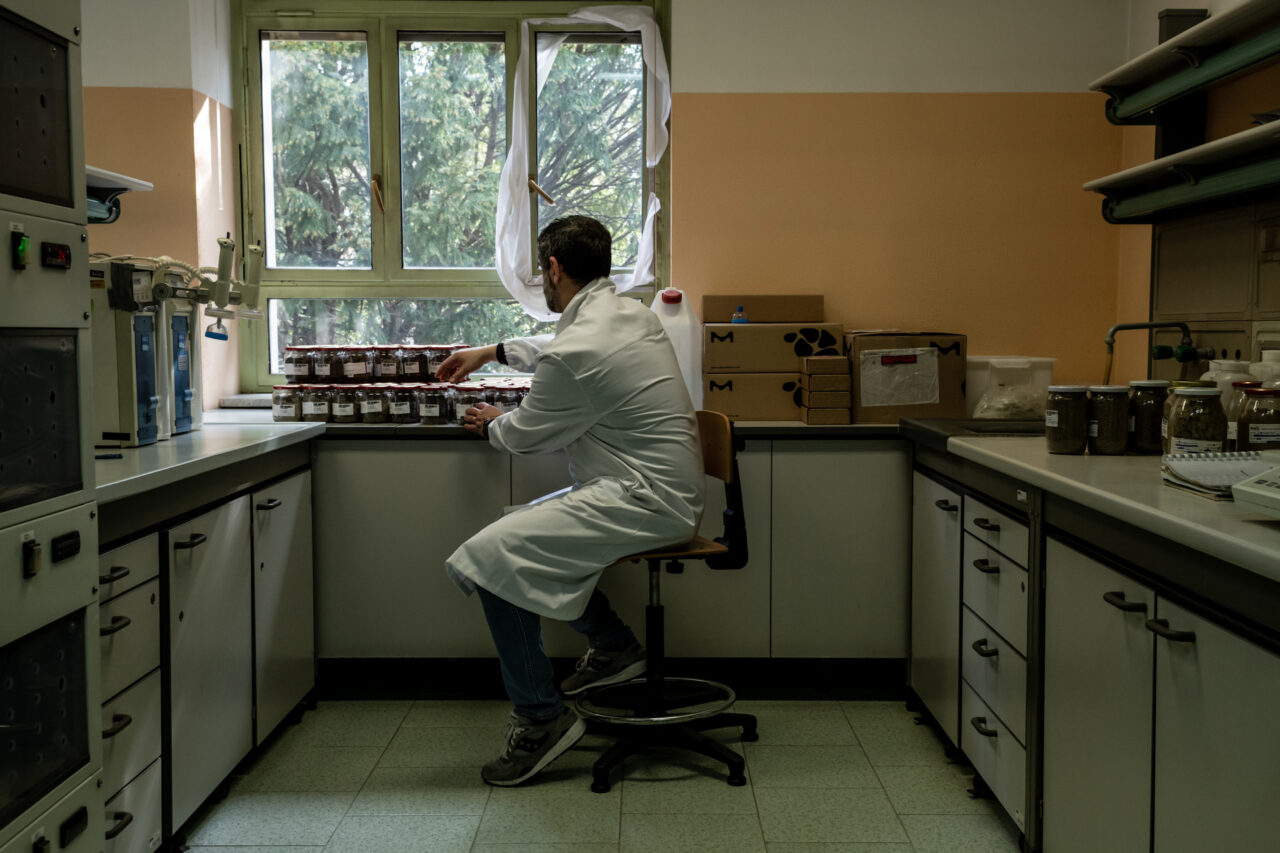
An ARPA Piedmont chemist checks soil samples in the Alessandria laboratory. ARPA’s Alessandria office specializes in chemical analysis of soil samples. It is also responsible for taking all environmental samples in the province of Alessandria, including groundwater samples and soil samples polluted by the chemical plant. Alessandria, March 6, 2023.
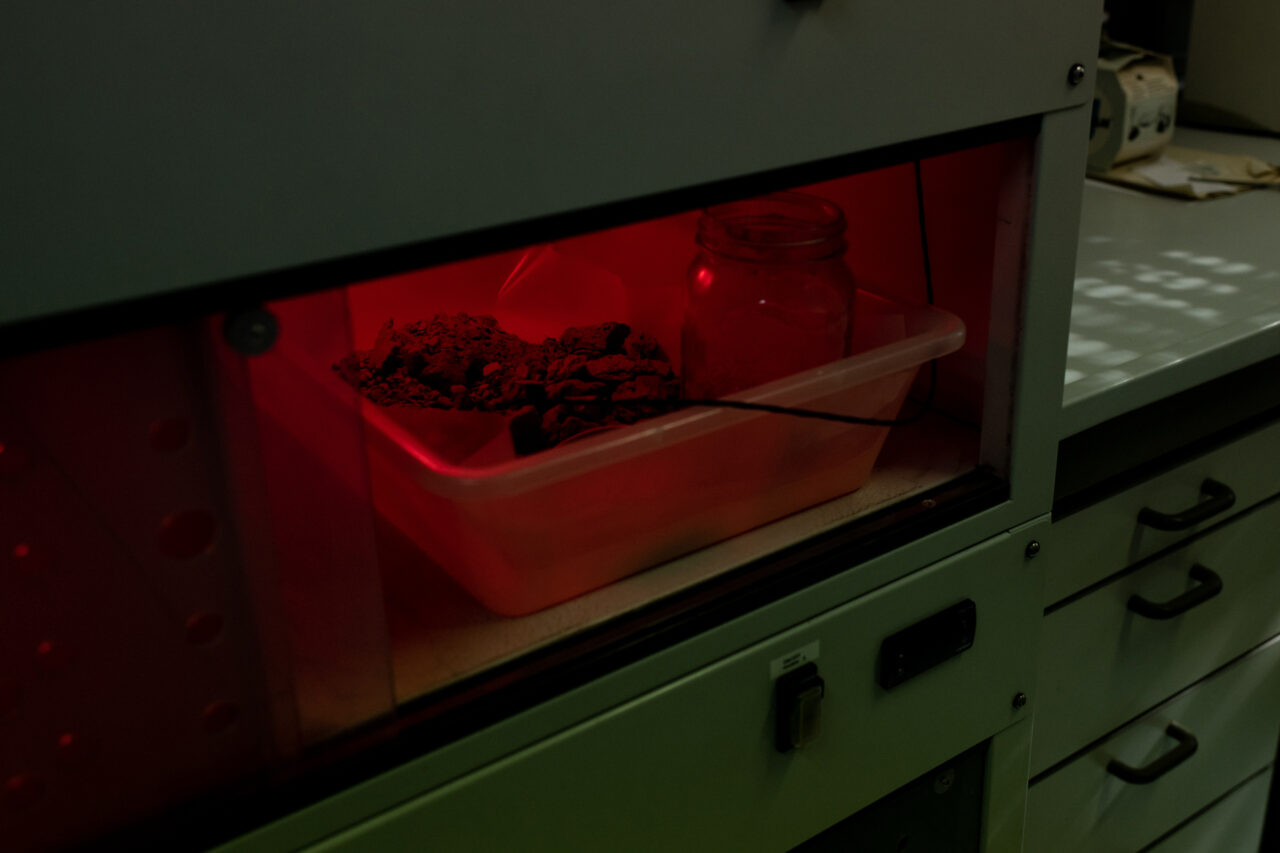
A drying soil sample to be prepared for analysis at ARPA Piedmont’s Alessandria office. Alessandria, March 6, 2023.
The European map of PFAS contamination (in Italian)
Adversarial sampling in Spinetta Marengo
In the area near the Spinetta Marengo chemical center and within it, there are several water testing points. In the wells inside the plant, ARPA reports, there are greater criticalities than in the wells outside. Although to a lesser extent than in the internal area, the presence of PFAS has also been found in the more distant external wells, confirming that they move into the environment from their place of origin. There is a PFAS monitoring plan in place that is the responsibility of Solvay and is carried out over a series of campaigns, at the end of which there is an obligation to return the results to public agencies.
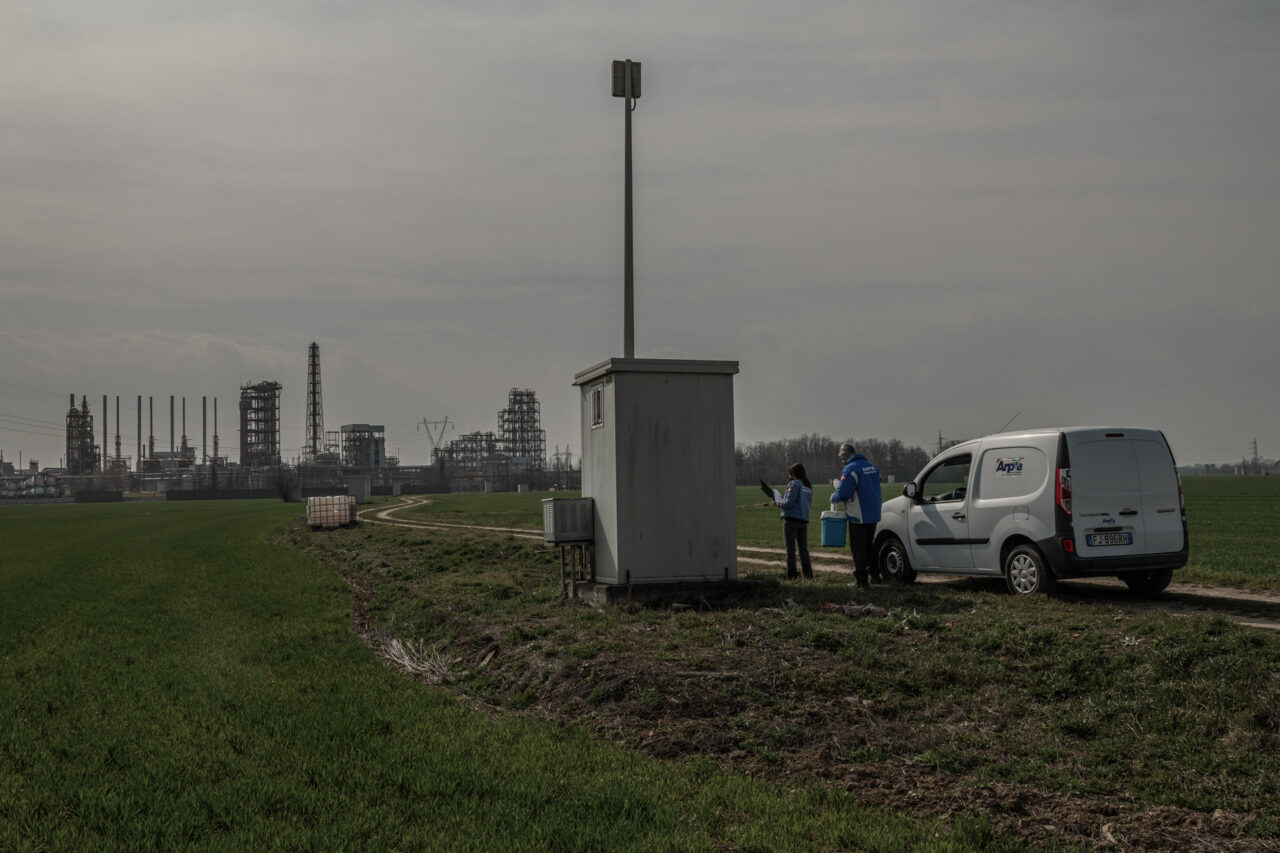
ARPA experts check one of the Piezometric wells in the field surrounding the Solvay plant during routine adversarial sampling with a company aimed at analyzing various pollutants from previous contamination and possible current contamination. Alessandria, March 6th, 2023.
ARPA cannot replicate the same sampling with the same frequency. This would be a very onerous activity. On some of the days when the workers employed by Solvay carry out the monitoring activities, ARPA is also present and collects similar samples. These are the adversarial samplings: water sampling that takes place at the exact same time between the two parties. This activity of ARPA is not inspectional in nature and is carried out within the limits of the agency’s possibilities.
PFAS in the air
As part of a path of strengthening ARPA Piedmont’s initiatives, since 2021 the monitoring activity of PFAS in the air has started. This is an activity that could be considered experimental since, even today, There are no validated and recognized methods either nationally or internationally. However, these monitoring are done through the deposition study, which is now recognized for the detection of micropollutants. The data that is obtained is not that of concentration in the air, but a quantity data on the square meter: what is deposited on some different materials is collected depending on the pollutants that you want to monitor, in this case PFAS.
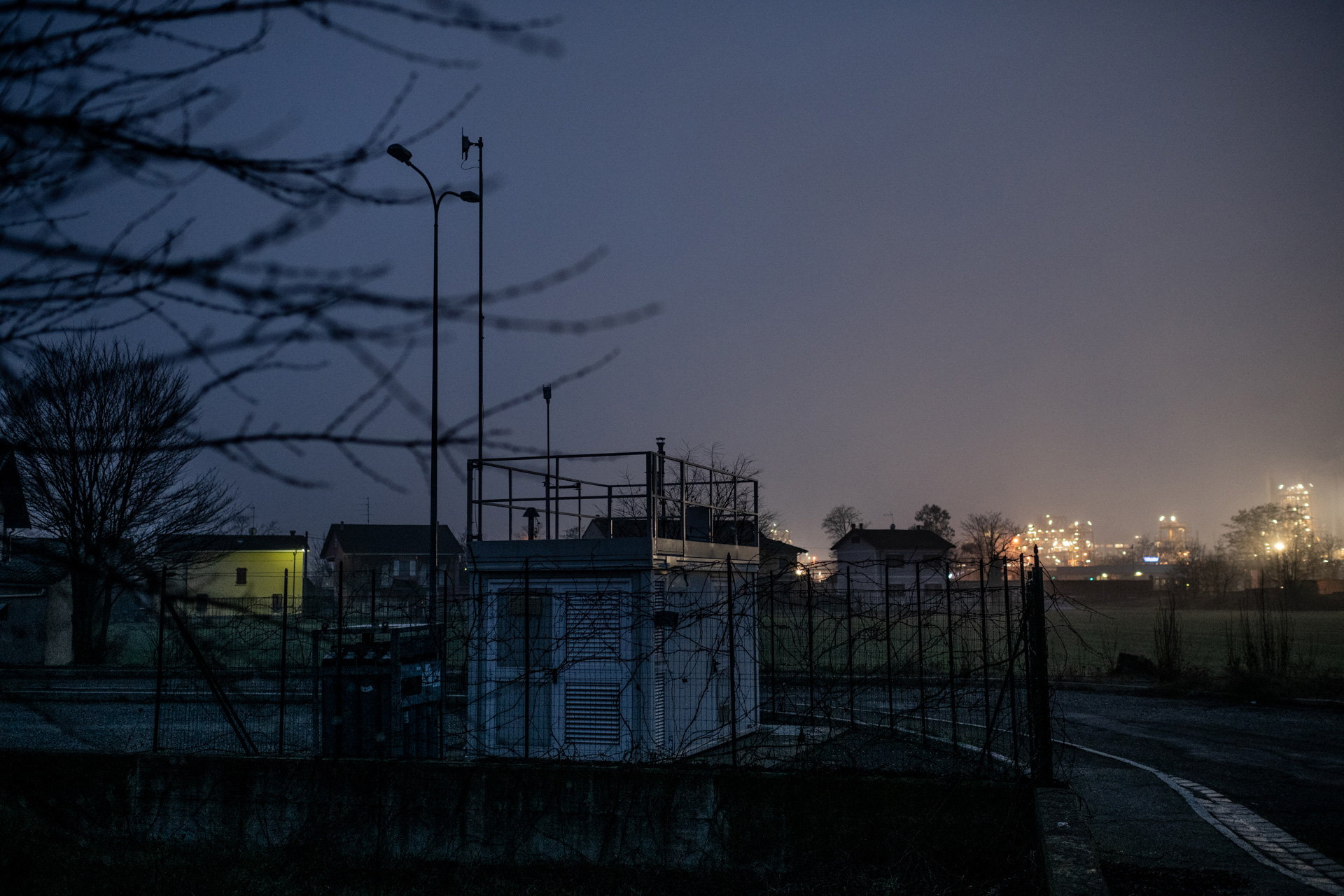
The ARPA air monitoring station is located in Viale Genova, near the Solvay plant in Spinetta Marengo. Alessandria, Italy, January 16, 2023.
«In Spinetta Marengo there are two monitoring booths dedicated to the study of PFAS in the air, one on Genoa Street and one on Bolla Road. We measure site-specific pollutants, that is, typical of Solvay’s production. We collect data on a monthly basis», explains Marta Scrivanti, director of ARPA says Alessandria department, «we have found positives, particularly of cC6O4, which is a PFAS substance that only Solvay produces. But again, we are moving in an unregulated field, and we have no guideline value with which to compare the results we collect. The direction of the winds has a major influence, but we can’t afford to make assessments yet: the historical series of analysis of PFAS in the air has just begun.»
ARPA is not the only public agency working among many difficulties. The complexity of the subject matter and the lack of funds are also a problem for those who should give answers to the citizenry in the area of health.
Drinking water monitoring
The Local Health Authority began to participate in specific activities only since the pollution problem in Spinetta Marengo was officially recognized. It is since then that the Food and Nutrition Hygiene Service (SIAN) of the ASL has initiated specific monitoring of drinking water. Among these is a sampling plan to check for the possible presence of PFAS, which takes into account some wells from which water is taken that will later be fed into the water supply.
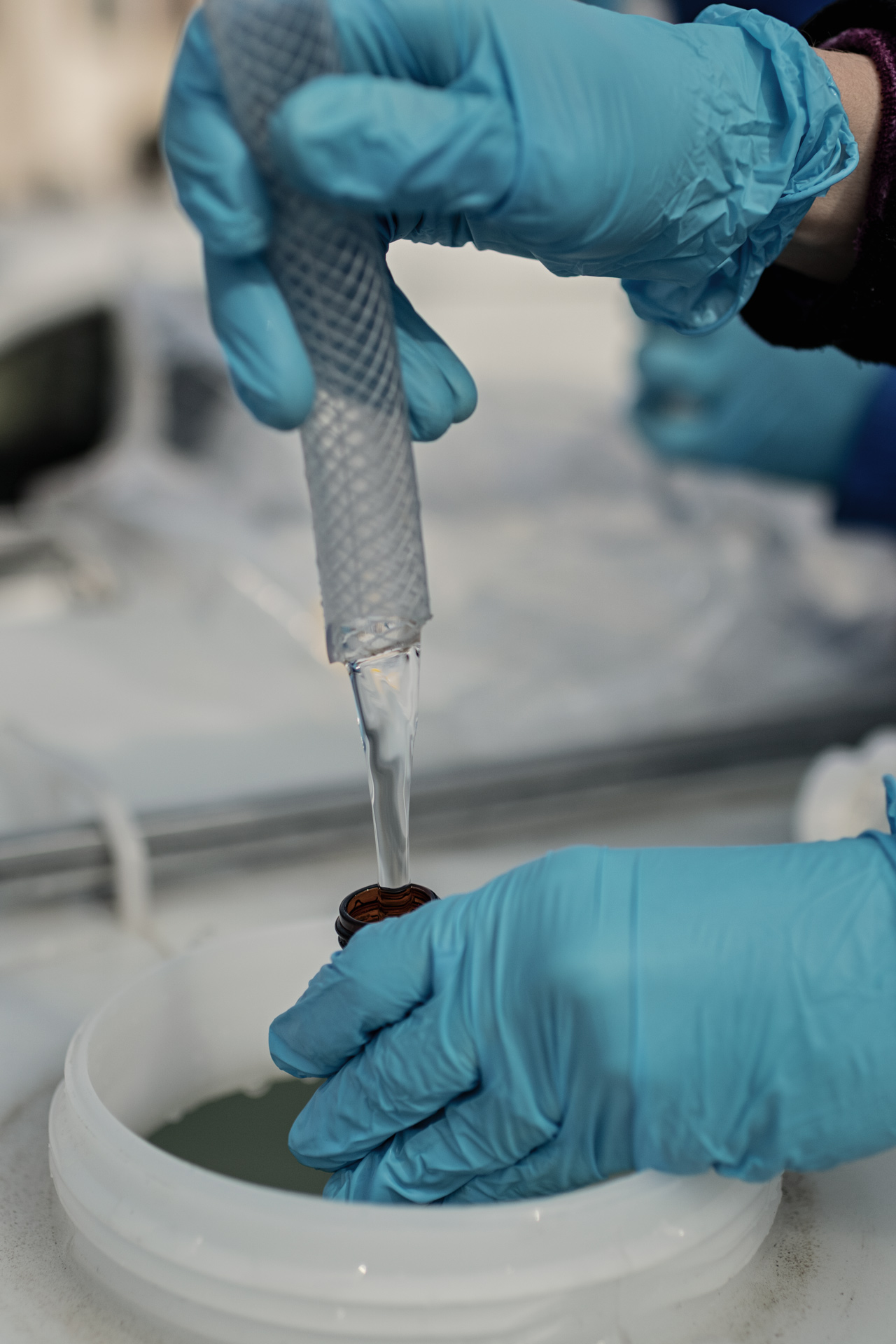
An ARPA expert samples groundwater from one of the piezometric wells in the field surrounding the Solvay plant during routine adversarial sampling with the company, aimed at analyzing various pollutants of previous contamination and possible current contamination. Alessandria, March 6, 2023.
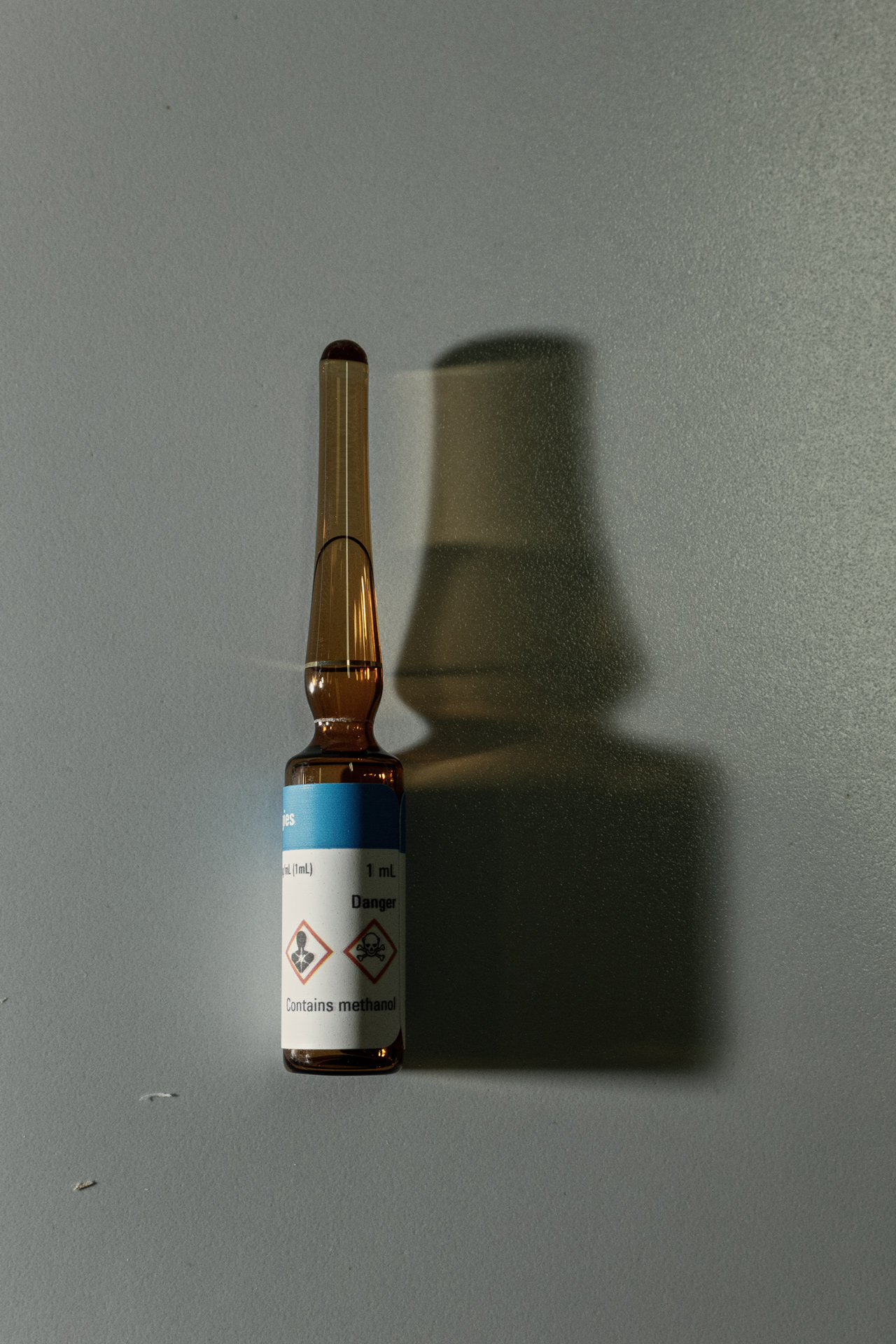
A vial of PFAS analytical standard called C6O4 at the Alessandria office at ARPA Piedmont. Alessandria, March 6th, 2023.
The ASL categorically rules out any danger: the parameters defined by law are being met. Simply put, according to the ASL, Spinetta Marengo’s drinking water could be drunk for real. Despite this, the health company is often accused of reluctance to make data public.
«We suffer from severe staff shortages in many areas. Our reluctance is not reluctance, but a slowness related to contingent factors, often linked to a past history in which the design of activities was not precise enough», clarifies Guglielmo Pacileo, head of the “Clinical Governance – Quality – Accreditation” structure of ASL Alessandria. «Managing communication to the public is difficult. We are grafted onto a very long and controversial history of pollution. There is often a very negative perception, so any delays can be interpreted as if the ASL wants to hide something. But we don’t have anything to hide, we just want to collect the data properly and communicate it in the institutionally prescribed forms.»
PFAS AND OCCUPATIONAL MEDICINE
Authorization for the use and marketing of chemicals comes after a process that uses studies provided to the authorities by the manufacturer itself. In the case of PFAS, it is common for the studies to be covered by Industrial secrecy. «The evaluation by ECHA – the European Chemicals Agency – is based only on the results and not on the study methodology», points out Paolo Merlo, head of the Food Hygiene and Nutrition Service (SIAN) of the Alessandria ASL, «One does not, therefore, have full knowledge of the process that led to the evaluation of the substance. All public studies are done after the fact. In the face of this, we try to provide well-founded and solid answers.»
The Prevention and Safety Service for Workplaces (SPRESAL) has for many years been conducting a monitoring program related to the presence of PFAS, specifically ADV7850, PFOA and cC6O4 in workers at the Spinetta Marengo chemical center. The program is carried out through an agreement between SPRESAL, Solvay and IRCCS Ca’ Granda Foundation General Hospital of Milan.
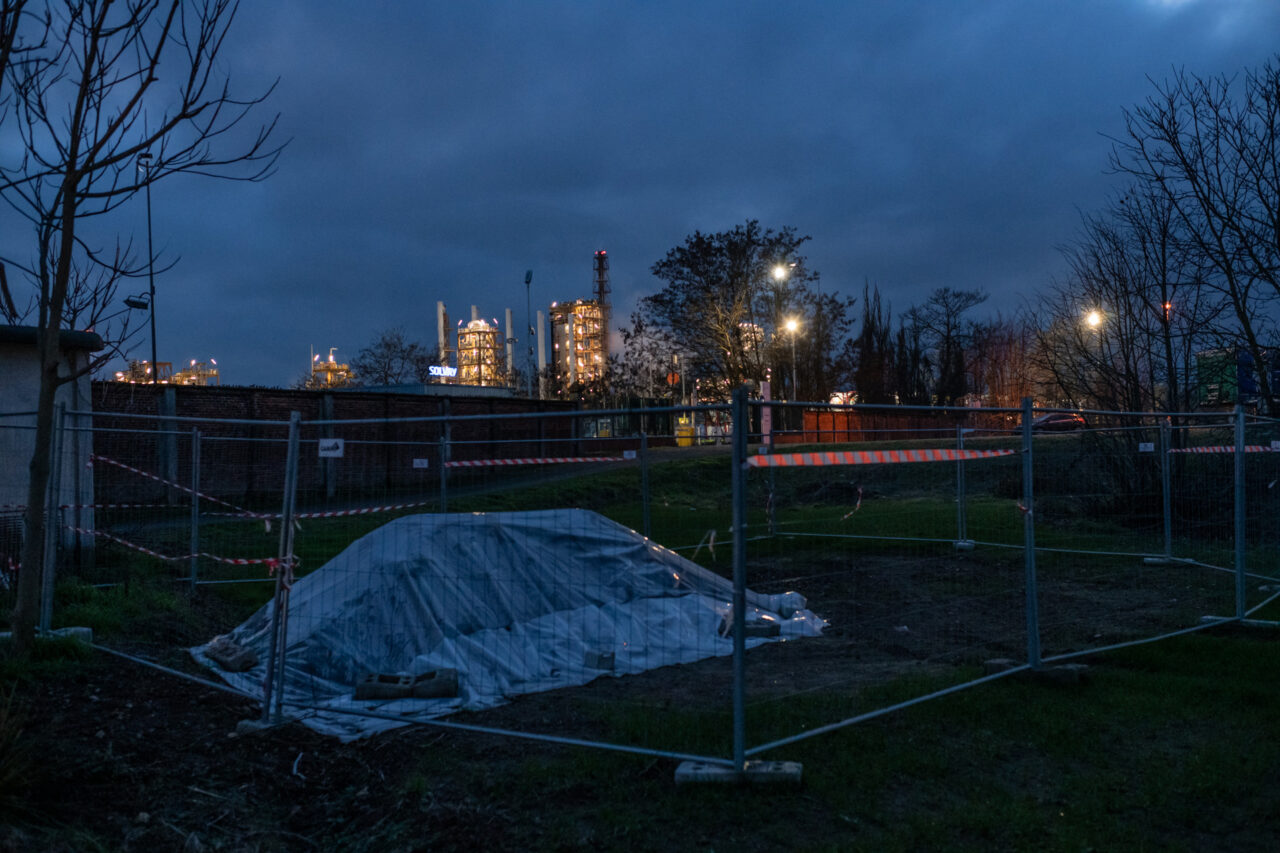
The truck entrance to the Solvay plant in Spinetta Marengo, seen from a private garden bordering the factory. Alessandria, Italy, January 19, 2023.
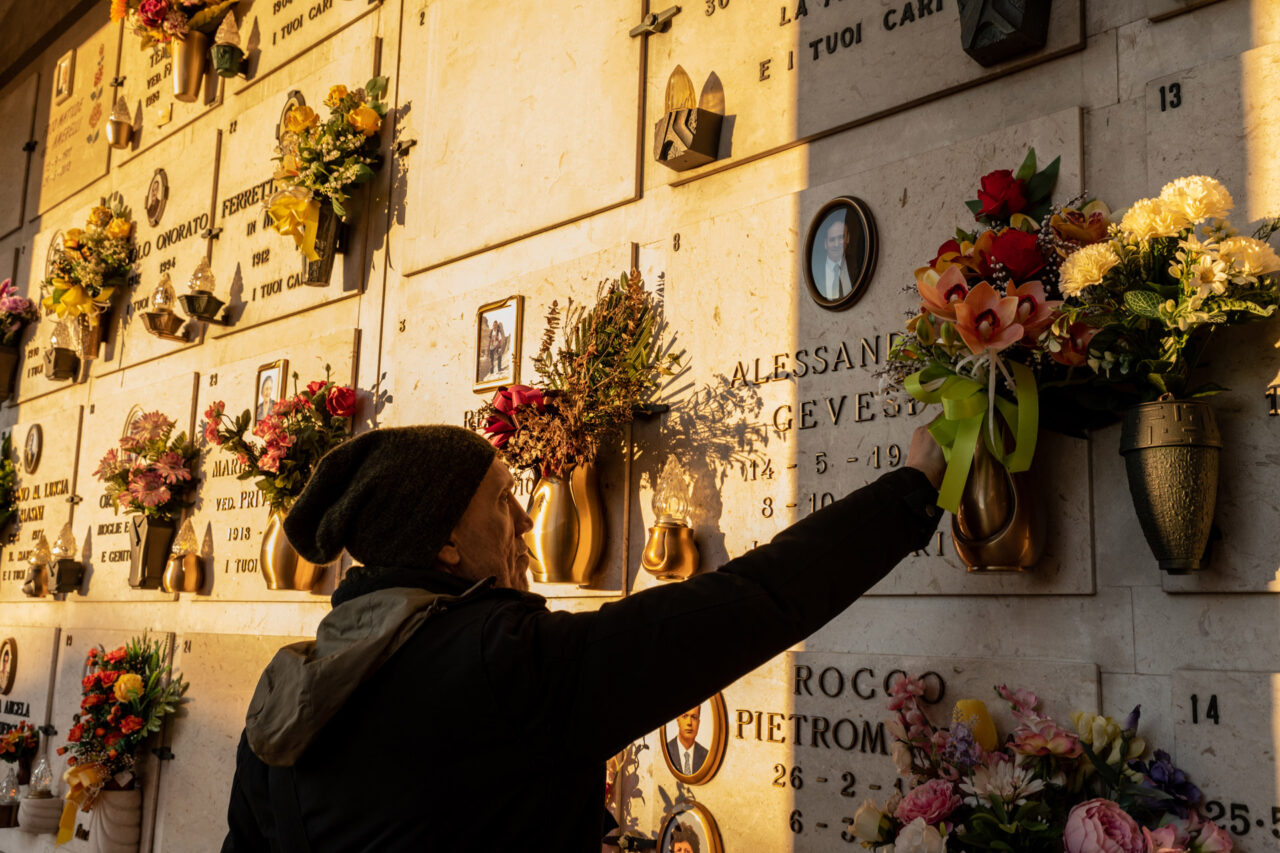
Riccardo Ferri, 56, visits his uncle’s grave in Spinetta Marengo cemetery. His uncle died of leukemia a few years after his retirement. Alessandria, Italy, January 20, 2023.
The numerous blood tests of Solvay workers have been taking place since 2004 and involved various departments of the chemical center, depending on the risk of exposure. This medical surveillance is continuous and results are shared annually with employees, unions and health authorities.
Although these were modest concentrations, there was evidence that PFAS, in Spinetta Marengo, had entered the food chain.
PFAS in eggs and vegetables
In Piedmont, as part of the regional prevention plan, an Environment, Climate and Health table was set up in the knowledge that ASLs cannot provide responses to environmental emergencies of this magnitude. The working group conducted a 340,000 Euro funded biomonitoring project that focused on sampling vegetables and eggs in the Spinetta Marengo area.
The study showed the presence of ADV, albeit in modest amounts, and cC6O4 in only one egg sample. Although these were modest concentrations, there was evidence that PFAS, in Spinetta Marengo, have entered the food chain.
In light of these findings, the need for an analysis of the population at risk becomes more and more compelling. However, even in this case, there is no shortage of difficulties preventing speedy action. Local authorities are trying to put together a feasible study just to figure out what the economic commitment needed might be and decide what the sample size will be.
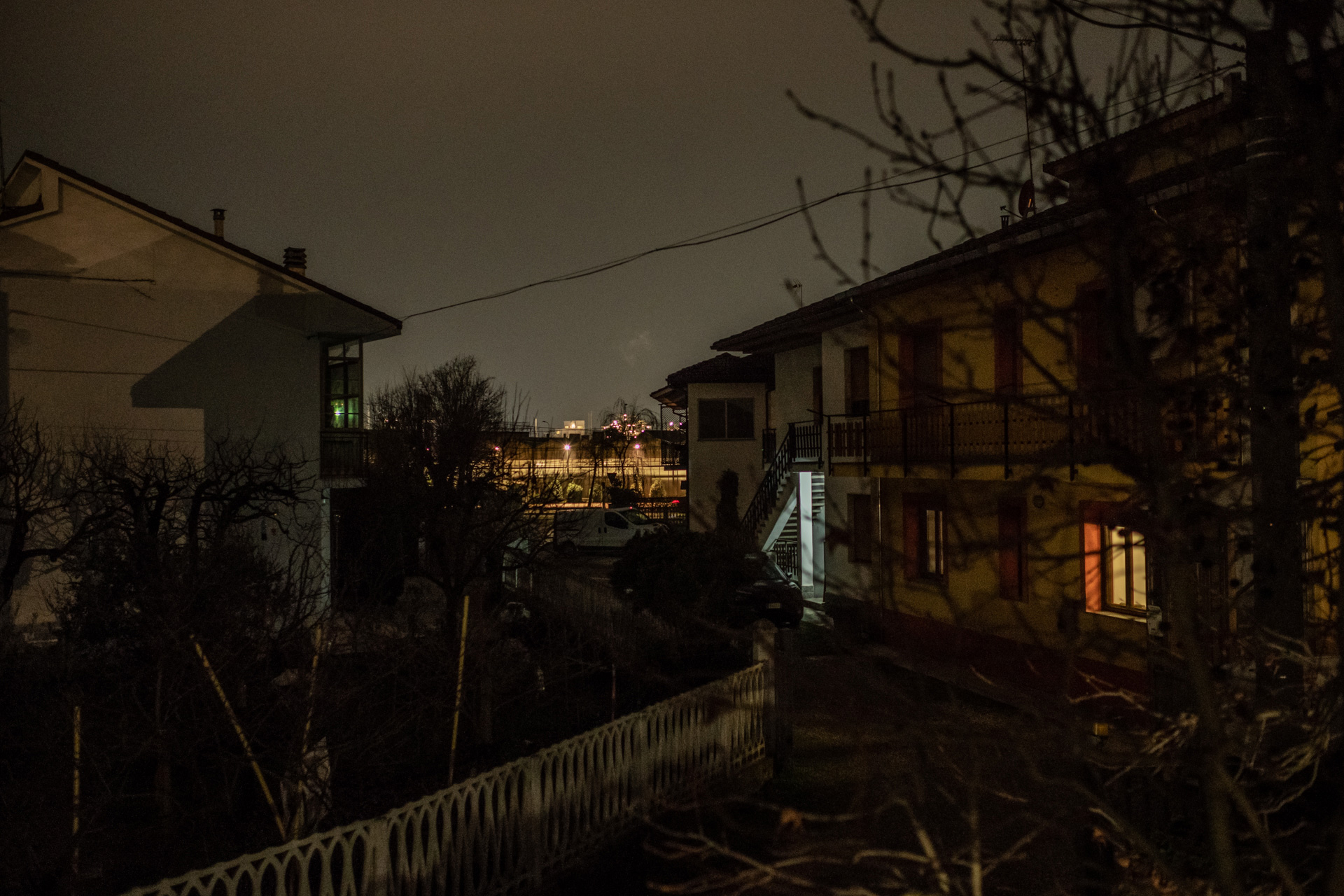
The Solvay plant glows in the night in front of Riccardo Ferris’s house in Spinetta Marengo. Alessandria, Italy, January 18, 2023.
Preparing local health care
Blood tests organized by STOP Solvay activists and Belgian journalists bypassed the local health care system. The initiative had the certain merit of drawing very strong attention to the problem. This action also raised some questions: what should a person who learned that he had high levels of PFAS in his blood do? Who could he turn to, since there is currently no health protocol in place?
«The initiative has drawn attention to the presence of a problem. It is clear, however, that from a public health perspective, the moment you identify a problem you must also have a ready response. Otherwise you leave people in anguish, without guidance», Pacileo recalled. «In December 2022 we met with Spinetta Marengo’s primary care physicians. Among the various activities related to the regional table is the need to prepare an information document for family physicians that frame the PFAS issue and gives clear guidance on how to act. The public institution can never afford to move without being clear about the answers to be given.»
What should a person who has learned that he or she has high levels of PFAS in the blood do?
READ ALSO: Everything you need to know about PFAS (in Italian)
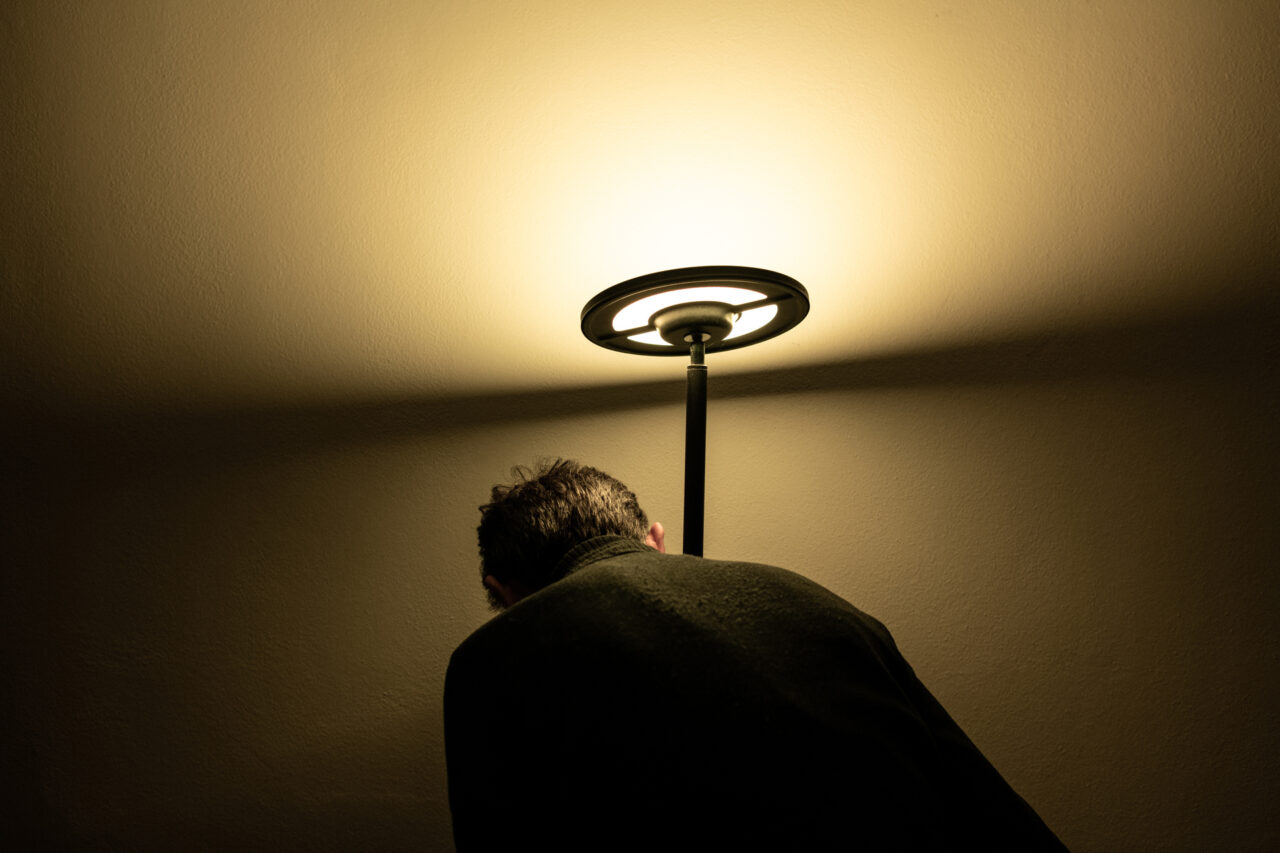
Riccardo Ferri, 56, lights a lamp in his room in Spinetta Marengo. Ferri is very concerned about the presence of PFAS in his blood. Alessandria, Italy, January 18, 2023.
Spinetta Marengo: consequences and compensations
The presence of the chemical center brings into play different interests that also affect the future of development in this area. As it turns out, the local public apparatus is in an embarrassing situation due to a now unjustifiable absence of legislation. On the other hand, the authorities have their hands tied; on the other, they have to do something.
«That of the Spinetta Marengo chemical center is the issue of issues in Alessandria. It involves every aspect of public life,» explains Giorgio Abonante, mayor of Alessandria since June 2022. «In this very difficult context I have an obligation not to be omissive. But I do not have the legal authority to be able to make decisions that could be rushed, not supported by sufficient reasons, which must be provided by the entities, which in turn are moving in a context that is not well defined.»
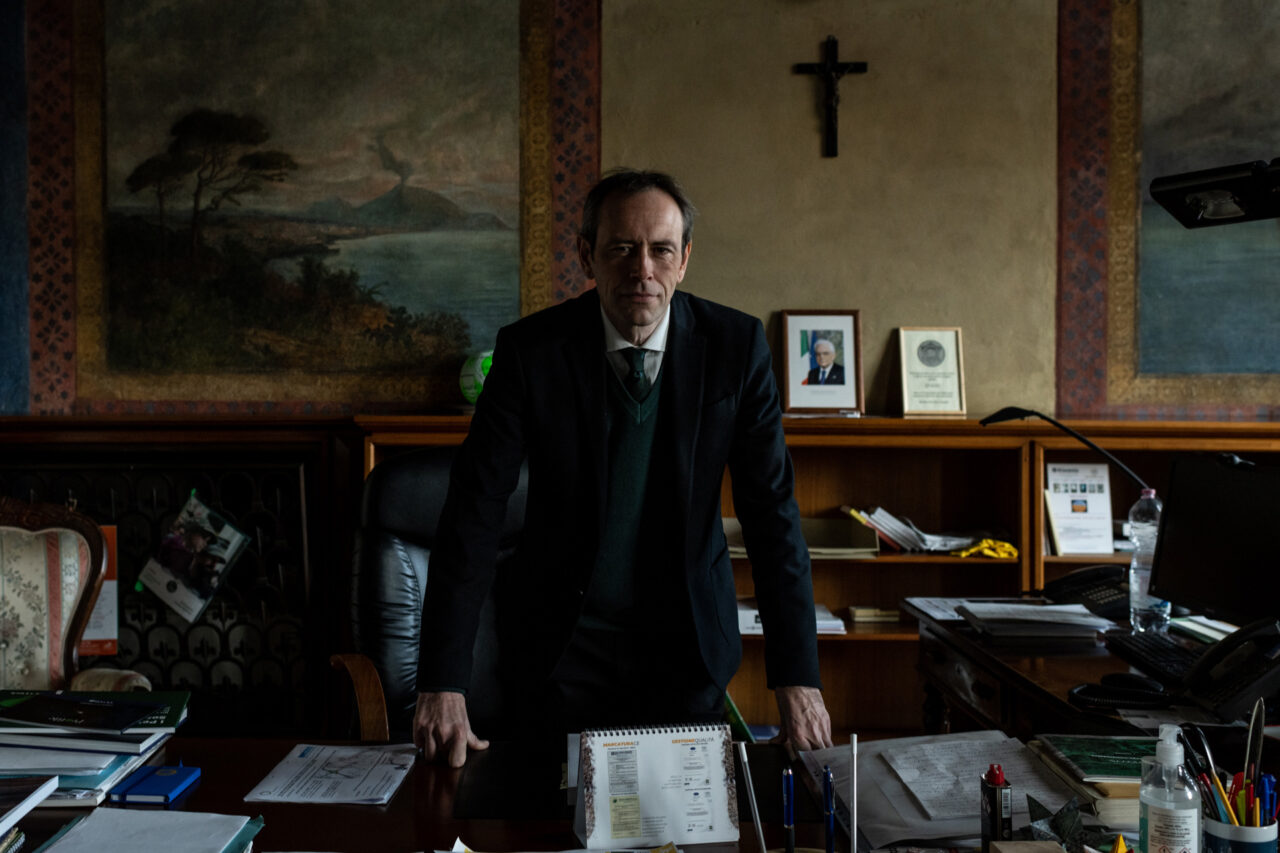
Georgio Abonante, mayor of Alessandria, elected June 28th, 2022, faces a controversial and complicated situation of public health and environmental pollution. City Hall, Alessandria, Italy, January 21, 2023.
The Alessandria administration hopes that Solvay will invest further to permanently secure the facilities. The hydraulic barrier prepared to act on groundwater contamination, according to the prosecutor’s investigation and as also mentioned by the mayor, does not work well under some specific conditions. In addition, the release of the substances into the air must necessarily be reduced. Spinetta Marengo, with its chemical center, is a place that “serves” half the world. The damage that the area has suffered is obvious and that is why, in some way, it should be compensated.
a drastic decision
The difficulties of the public apparatus force us to think very broadly about our system of control, production and consumption. «Multinational corporations have developed research apparatuses that are extremely powerful. In the last 30 years they have deconstructed, or at least divided, the public system,» specifies mayor Abonante, «our universities, our ARPA, our ASL have very, very limited strength. we are confronted with absolutely unequal arms.»
The public apparatus is nowhere near able to keep up with the research apparatuses of large industrial groups.
When the public asks for preventative action, with timely reports on certain substances, it is as if they’re asking for something impossible. The public apparatus is nowhere near able to keep up with the research apparatus of large Industrial groups. Paradoxically, however, public authorities also hold the power to make a drastic decision: the obligation to stop production. In other words, the closure of the factory.
But the scenario of a closure of the chemical center would be «a tragedy both from an employment and an environmental point of view,» Abonante warns,«because it would entail the end of any kind of reclamation that has been underway for years. The only solution at that point would be for the state to intervene by allocating billions of euros. That is impossible.»
The knot that binds the chemical center to the territory is now very tight. As we shall see, the relationship between the company and the city is much debated.
PART 3 – The company
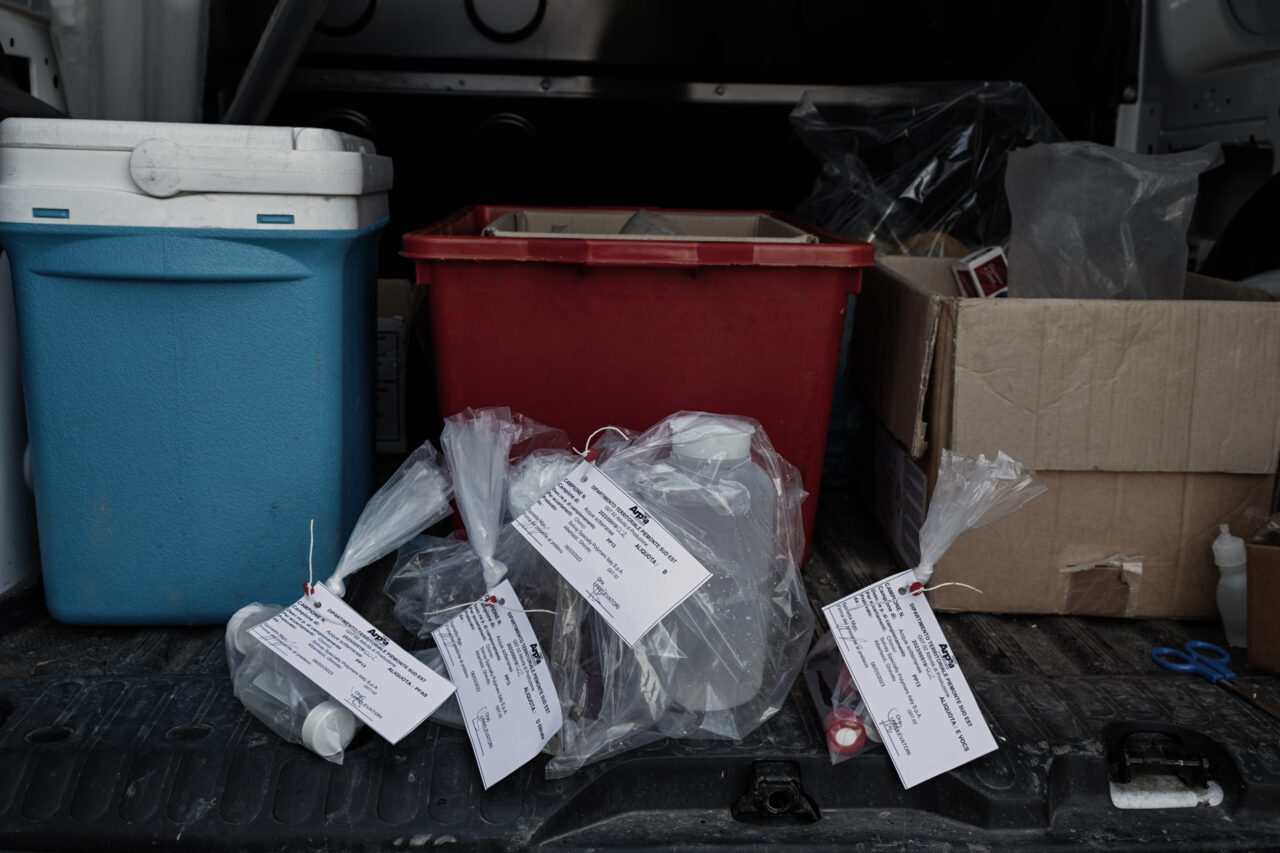
Groundwater samples collected by ARPA from one of the piezometric wells surrounding the Solvay plant were sealed before being sent to the testing laboratory. Alessandria, March 6, 2023.
The following contributed to the publication of this article: Anna Violato, Alfonso Lucifredi, Marta Frigerio, Niccolle Ramirez Vilchez, Francesco Martinelli, Davide Michielin, Natalia Alana.
This investigation is a part of The Forever Pollution Project, a cross border survey in which 18 newsrooms from across Europe participated. A group in addition to RADAR Magazine includes Le Monde (France), Süddeutsche Zeitung, NDR and WDR (Germany), The Investigative Desk and NRC (The Netherlands) and Le Scienze (Italy), and also joined by Datadista (Spain), Knack (Belgium), Deník Referendum (Czechia), Politiken (Denmark), Yle (Finland), Reporters United (Greece), Latvijas Radio (Latvia), SRF Schweizer Radio und Fernsehen (Switzerland), Watershed and The Guardian (United Kingdom).


